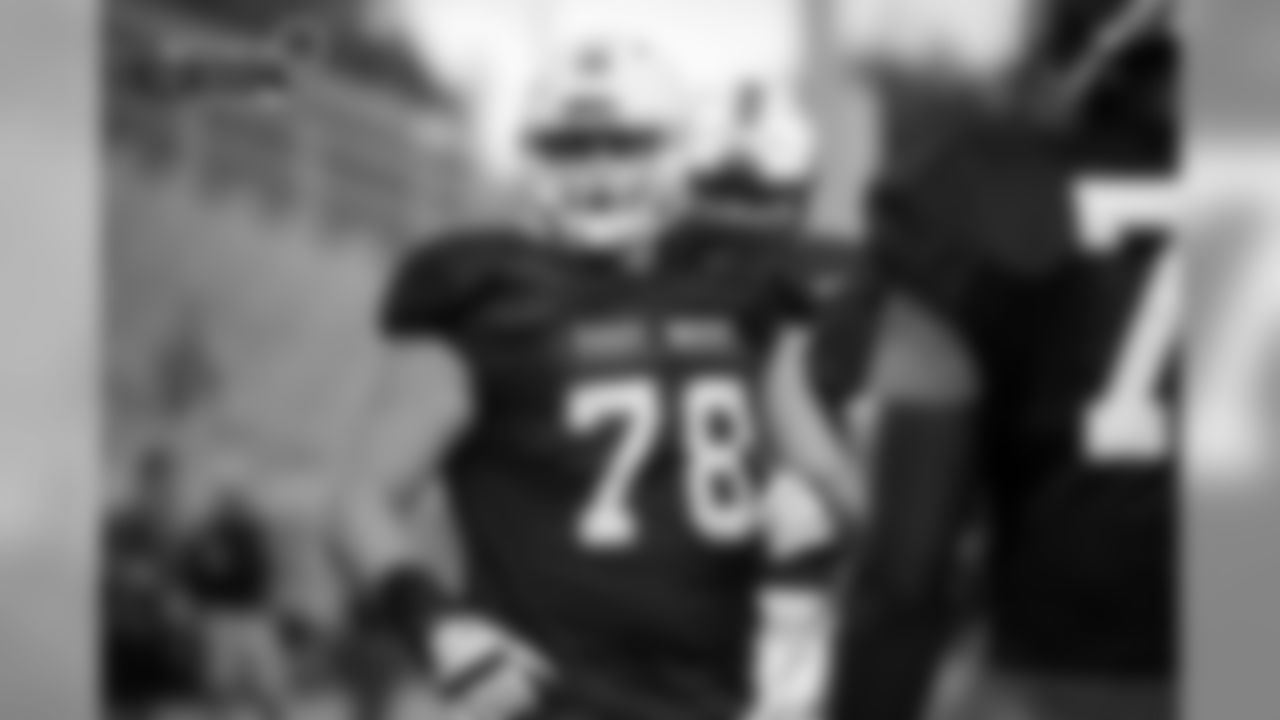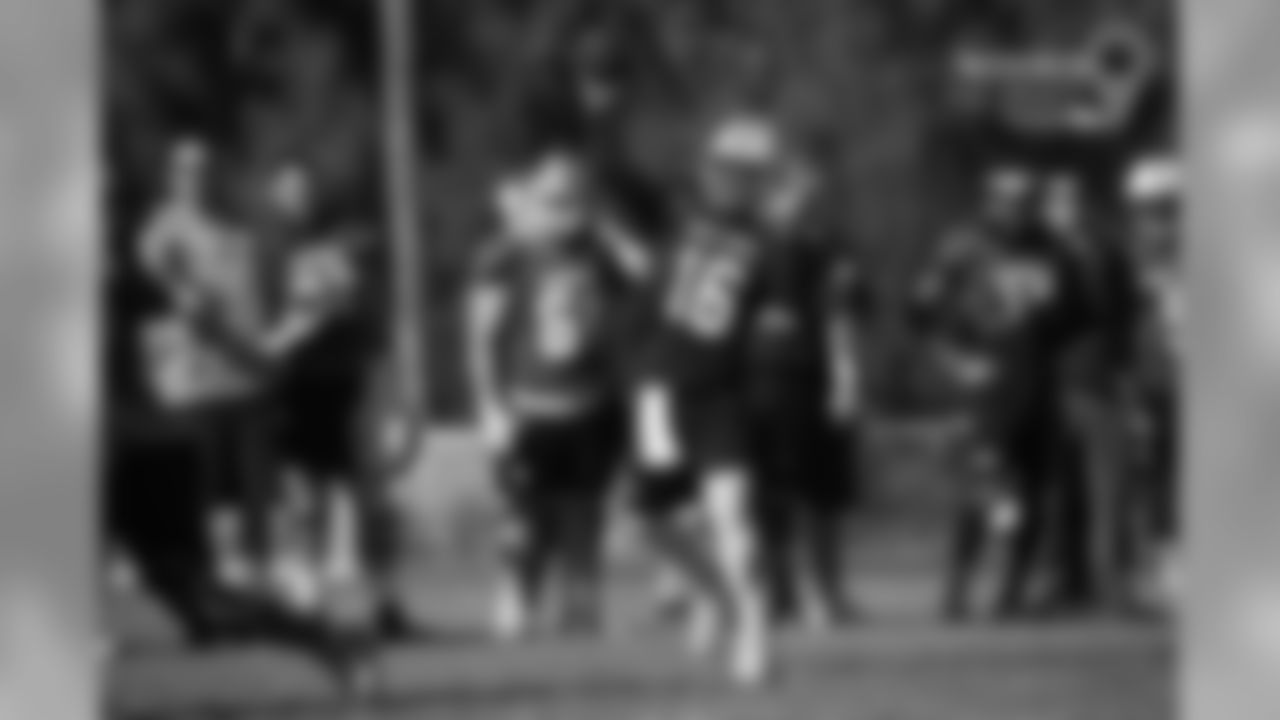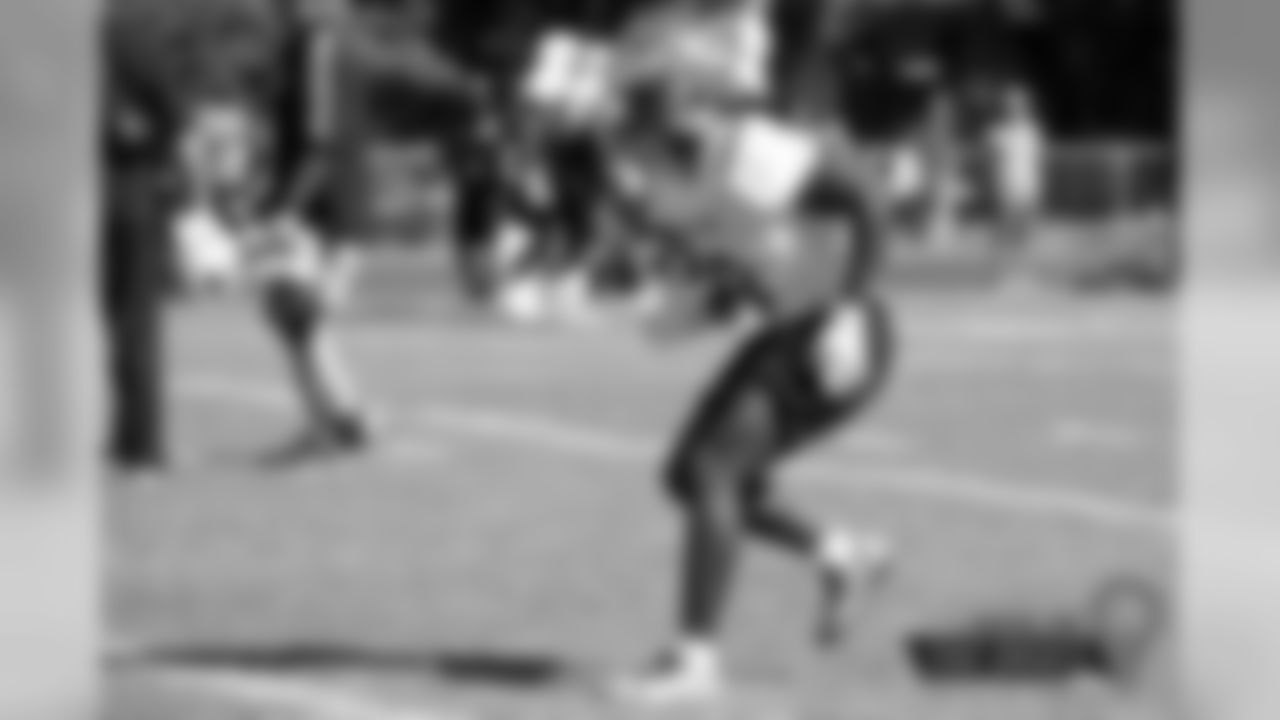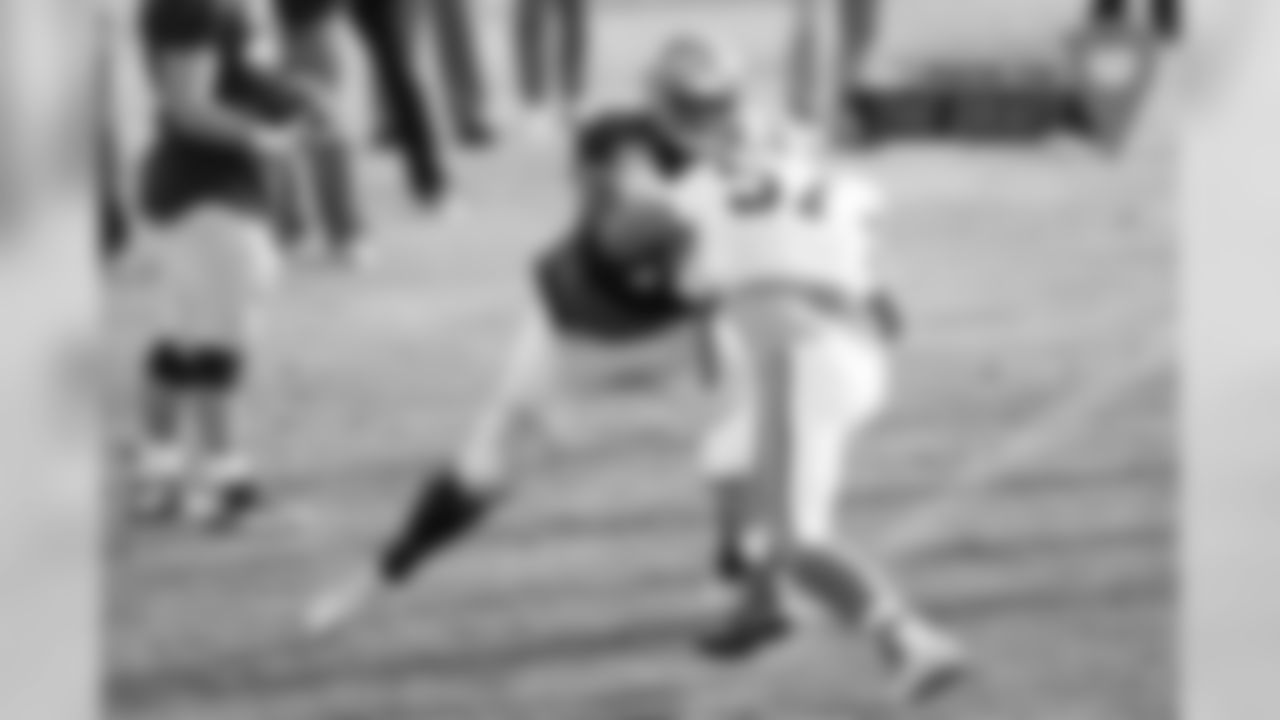It has been well documented that Broncos' coaching staff will coach the North team in the annual Senior Bowl next week, which is a great opportunity for Broncos coaches and personnel people to get an early view of college talent in advance of the draft.
But there is another college all-star game on Saturday, and it should not be overlooked.
One of the reasons for that is that it is yet another chance to evaluate college talent, but the other is that there is a wonderful cause attached to the game.
Andrew Mason offers his evaluations of eight key players from the final two days of East-West Shrine Game practice. (Photos: Andrew Mason)

Senat is much lighter on his feet and more agile than you would expect a 322-pounder to be. During Wednesday's practice, he won most of his pass-rush drills, adding an effective spin move to the bull rush that he has the strength to utilize. Senat's play against the run forced the East offensive line to make him the focus of double-teams, but he was still able to disrupt plays, either by forcing his way into the backfield or continuing to move laterally, allowing other front-seven players to make stops.

Most years, some East-West Shrine Game standouts get the call to take part in the Senior Bowl the following week through late invitations. This year, Toth is the first player to get that call. The 6-foot-6 inch tackle was one of the best run blockers in college football -- which made him particularly effective for the ground-intensive Black Knights. Toth added 85 pounds of mass over the last four years, transforming himself into an effective player -- and Army's first Senior Bowl selection.

Barrett's combination of overall productivity and experience in high-leverage games and situations gives him a good chance of being drafted, even though his overall arm strength does not match that of some other quarterbacks in this year's draft class. At times, Barrett seemed to want to show teams that he would pass rather than run, and he occasionally bypassed wide-open running lanes upfield to get the ball out to his running backs and tight ends. This will serve him well in the long term, but as he begins developing as a pro, he will continue to need to rely on his mobility.

Nothing about the measurables jumps out for Nichols, a 5-foot-9, 186-pound cornerback with the shortest arms of any player at the East-West Shrine Game (29 1/4 inches). But his tenacity, aggressiveness and willingness to attack opposing receivers at the line of scrimmage made him the "plays bigger than he stands" defensive back of this week's proceedings. His one-on-one duels with Northern Iowa wide receiver Daurice Fountain were among the most spirited of the week. Nichols has a chance to develop into a solid slot cornerback.

When the 6-foot-6, 275-pounder is on, he is one of the most difficult players to block in this year's class. He does a good job using his 34 1/8-inch arms to maximum effectiveness working against opposing tackles; his length allows him to keep his distance while his strength gives him the ability to still use the tackle as leverage when he has proper hand placement. Consistency is the biggest knock on Thomas at this point, but if his potential can be harnessed, he could be effective as a defensive end in either 4-3 or 3-4 schemes.

The 6-foot-1, 245-pound West team linebacker was able to make his college production translate to another level this week, frequently winning his one-on-one matchups with a variety of moves. Rolland-Jones' versatility could also project well to a special-teams role if he doesn't work his way into a defensive rotation during his rookie season.

Mizzou's reputation for producing draft-worthy pass rushers looks set to continue with Frazier, who consistently dominated in drills and team periods throughout the week. The 6-foot-4, 261-pound Frazier was also effective against the run, holding his ground at the point of attack.

With players like Senat who arrive at all-star games from FCS, Division II or Division III, you want to find out if their measurables, athleticism and dominance at their levels will translate to a higher caliber of competition. Senat's quickness stood out -- which is what you expect for an offensive tackle who carries 294 pounds on his 6-foot-6 frame. He will likely need to get up to or above 300 pounds, but as the game continues to evolve and incorporate more spread concepts that play into the hands of lithe, athletic tackles, Senat could be well-positioned for eventual success if a team gives him enough time to develop.
I am referring to the 93rd playing of the East-West Shrine Game, which is put on by Shriners International, headquartered in Tampa. Shriners International is a fraternal organization, and you might be most familiar with it because you've seen members in their famous hats, the red Shriners fez.
The game's motto, "More than just a game," refers to its charitable aim, which is to benefit kids who are being treated for a variety of conditions.
I have been at the Shriners' headquarters in Tampa, Florida, many times, and while it makes you focus on the fact that many youngsters face an uphill climb physically, it also makes you proud that our sport of football has been making contributions with the Shriners for nearly a century.
Andrew Mason and Steve Atwater of our website have been attending practices this week, and Atwater actually is in the Shrine Game Hall of Fame, making that a great reunion topic.
The game actually began as a baseball charity game played annually before 1925, but that was the year when it was determined that more money could be raised if it were a college football all-star game rather than a baseball matchup.
The idea was to raise money for the Shriners for charity, and the football game was an instant hit. Back then the game was in the Bay Area (the other Bay Area, in San Francisco) and it was played at ancient Ewing Field — which even predated Kezar Stadium in San Francisco.
(While the stadium mention is a bit of an aside, any time I can work the legendary Kezar Stadium into something, I try to do so.)

This is the seventh year the game has been played in St. Petersburg at Tropicana Field, and it is now coached by NFL assistant coaches whose teams are not still involved in the playoffs.
Over 300 scouts, team personnel and agents will be in attendance this week, and while the weather will be perfect inside the domed stadium, my greatest memory of the game as a youth was a game once called the "Mud Bowl," which was at Kezar Stadium in 1965.
USC running back Mike Garrett was named to the Shrine Game Hall of Fame for his performance, which involved slogging his way through a reported 3 inches of mud — which looked like a lot more on black-and-white television — and the West got a 22-7 win in a game that immediately obliterated uniform numbers for both teams.
It was bizarre but very fascinating to me, and it created the first significant impact of the Shrine Game in my memory bank. I remember the announcer interviewing the Shriners' representative about the charity work they did.
By the way, future Broncos quarterback Craig Morton is also in the Shrine Game Hall of Fame, along with Dick Butkus and Gale Sayers, all of whom had legendary performances in the 1964 game.
I encourage readers to follow the practices via our website's correspondents on site this week, and while the more famous college talent might be in next week's Senior Bowl game, let's not forget that talent comes from lots of places, and Saturday's East-West Shrine Game will benefit many children long after this game is played.













